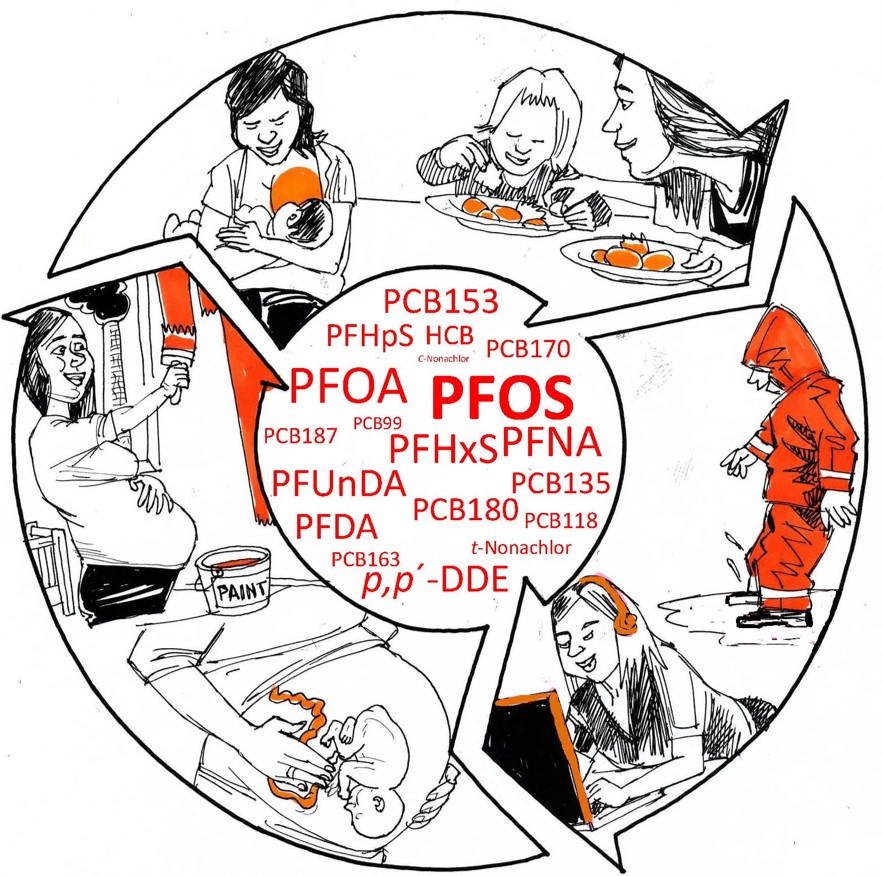Persistent organic pollutants in the Arctic
Persistent organic pollutants are a group of man-made chemicals produced by the industry for use in products like pest control, textiles, electronics, and kitchen utilities. Two important groups of POPs are poly- and perfluoroalkyl substances (PFAS) which binds to proteins and circulate in blood, and organochlorines (OCs) which are fat-soluble and accumulates in fatty tissue. Due to restrictions on use and the banning of several POPs, environmental concentrations of many OCs and PFASs have decreased since the 1980s and early 2000, respectively. However, due to their persistence in the environment, humans are still continuously exposed to several POPs, mainly through the diet. POPs have for decades been transported by air and sea currents to the Arctic and are stored in the Arctic Sea ice. Consequently, melting of the ice due to climate change can lead to re-emissions of these “old sins” to the environment, hence, populations in Arctic regions may be exposed although production and use of POPs decreases.

Illustration: Odd Klaudiussen Idea: Vivian Berg. Copyright.
Publications:
Legacy perfluoroalkyl acids and their oxidizable precursors in plasma samples of Norwegian women